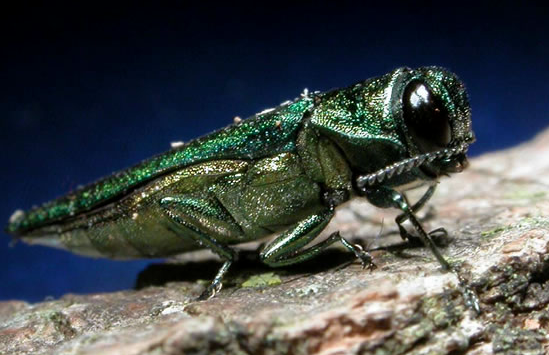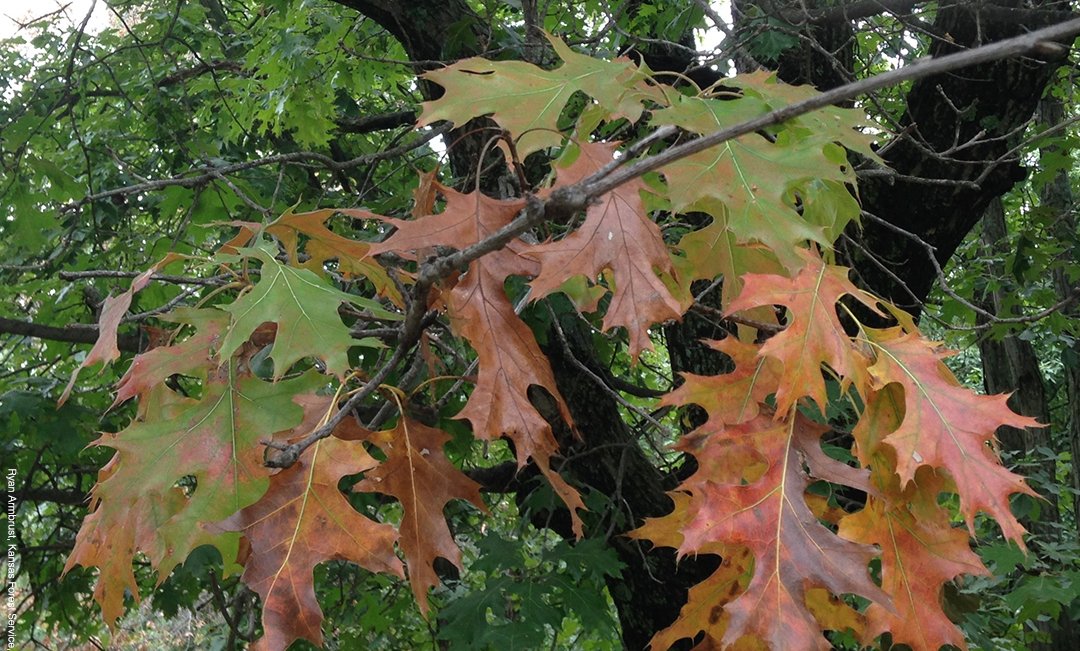Invasive Species
Invasive species are organisms that are not indigenous or native to our area and can adversely affect local habitats, resulting in ecological and environmental damage. These can come in the form of insects, fungals, plants, and other species introduced into an area.
Below are the current Invasive Species the Town of Orangeville would like residents to be on alert for.
Emerald Ash Borer
 Emerald Ash Borer (EAB) is an invasive species of beetle which feeds exclusively on ash trees. It is spreading throughout southern Ontario and has already killed millions of trees in North America. EAB is not harmful to humans, animals or other species of trees.
Emerald Ash Borer (EAB) is an invasive species of beetle which feeds exclusively on ash trees. It is spreading throughout southern Ontario and has already killed millions of trees in North America. EAB is not harmful to humans, animals or other species of trees.
Emerald Ash Borer in Orangeville
The Canadian Food Inspection Agency (CFIA) confirmed the presence of Emerald Ash Borer in the south end of Orangeville in 2013. The discovery was made in Erindale Park.
Our plan
Once a tree is infested with EAB, there are no options to save it. Orangeville Council decided on a 10-year plan to remove and replace all of the ash trees located in Town boulevards and parks. Currently the Town is in the seventh year of that plan.
Oak Wilt

Oak wilt is caused by a fungus called Bretziella fagacearum, resulting in a vascular disease of the oak trees. It makes its home on the outer sapwood of the trees. When this fungus grows, it restricts the flow of water and nutrients throughout the tree. The impact on species of oak trees varies, as some species are more vulnerable than others and can die within a year of infection. Red oaks are some of the most vulnerable and can die within two-to-six weeks after becoming infected.
Oak Wilt in Canada
The Canadian Food Inspection Agency (CFIA) announced the first confirmed detections of Oak Wilt in Niagara Falls and Springwater after receiving reports of symptomatic trees in the area. These are the first known cases of Oak Wilt in Canada. Red Oak species are particularly vulnerable to Oak Wilt and can die in as little as two weeks after infection.
Is Oak Wilt in Orangeville?
No cases have been confirmed in Orangeville, however, the Town is proactively sharing tips with residents on how to prevent the spread of Oak Wilt locally, and what to do if they suspect Oak Wilt is present in the community.
How to detect Oak Wilt
- The leaves of infected trees will have brown discoloration starting along the leaf edges that moves inward towards the middle margin.
- Discoloration, wilting, and defoliation are all typically seen higher in the crown first but will move downwards as the disease progresses.
- Another sign of Oak Wilt on dead Red Oaks are vertical cracks in the bark, which are created from underlying pressure pads that form as the fungus grows.

What to do if you suspect Oak Wilt
- Do not prune Oak trees from April to October when sap beetles are active. Sap beetles can spread the Oak Wilt fungal spores on their bodies from infected trees to healthy ones as they move around in search of food.
- Do not move firewood. Fungal mats could be present under the bark of firewood and be unintentionally spread to new areas.
- Be on the lookout for Oak Wilt, particularly when living in or near border cities. Oak Wilt has spread throughout 24 US States, several of which border Ontario.
If residents suspect Oak Wilt to be present on their Oak tree or a Town-owned Oak tree, they are asked to report all possible detections to the Canadian Food Inspection Agency (CFIA) and the Town at 519-941-0440 or email [email protected].
